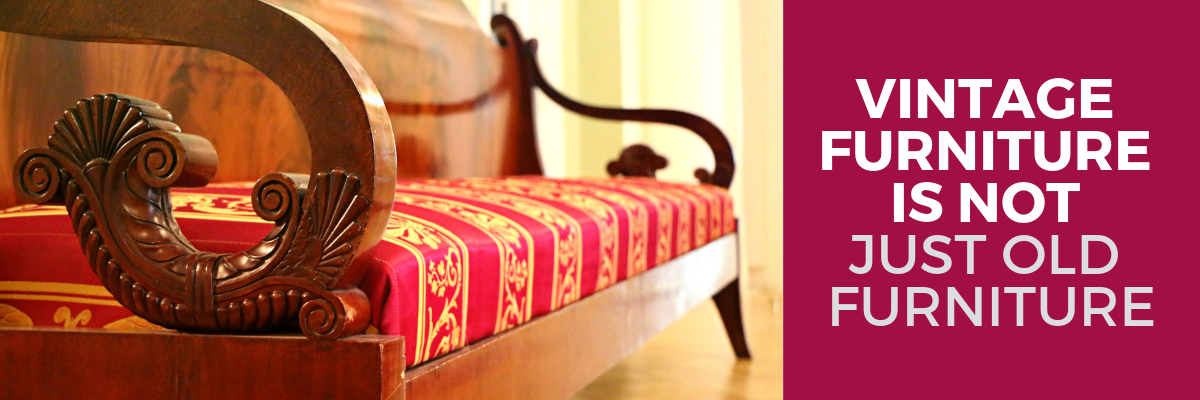
Written by Rick Parkinson, Owner of Caring Transitions of Upstate South Carolina
As "estate liquidators" we routinely spend substantial time examining furniture, looking for damage and checking functionality. Furniture is not as well made now as it was in times past. I can hear you say, NO KIDDING. Despite this, people prefer the new, cheaply made products. Going back 40-50 years ago, even before moving to manufacture outside the US, American furniture makers were "cheapening" their products, replacing solid wood exteriors with veneer covered particle board, gluing and stapling joints, as they attempted to compete with low-cost foreign imports.
Vintage American made furniture?... Isn't that the old-style stuff mom and dad furnished their home with? Half of which was handed down from grandma? And, didn't half of grandma's furniture
come from her older relatives? "Yes" is usually the answer. The word "vintage", when properly used should be followed by referencing the era the item is from, such as "vintage 1950s". The purpose of describing furniture as vintage is to connect it to a certain style typified by the era, but, also to inform, or remind, the buyer that the item was made to better quality standards than is today's furniture.
Quality & DurabilitySo, why is "old" furniture better? Because, more time, care, and expense were invested in making a product that'd withstand daily use, which may not be gentle at times. It needed to last a lifetime, and beyond. Furniture was generally made of solid wood, corners were connected by strong joints, dovetailed. It was nice if one liked the style, but durability was essential. Basically, that's what you get with older furniture: strength, stability, and performance over time. It can also be thought of as an investment because, unless abused, older furniture will last indefinitely and not need to be replaced, and it can be re-sold if you no longer need it or want it. If damaged it can be repaired, sanded and refinished, or painted.
Particle board? No way to repair it. It seems a benefit of particle board furniture is its lack of durability: After a short time throw it away and buy more.
Besides the quality and durability factors, what other reasons are there for buying "vintage" furniture?
UniquenessOld furniture often gains character through the years; a hard to define specialness. The most special "vintage" is entirely unique, perhaps bursting with whimsical character, impossible to reproduce. There is probably not another like it. When you buy a 60-80 year-old chair, table, or whatever, it is unlikely that your friends have one like it. There is something to be said for owning something nobody else owns. Often, these older items truly are "treasure".
Its Stories & History
Every vintage piece comes with a story, provenance, supplying images of its past life. Even if you cannot find any details beyond where you found the piece, use your imagination. Your item is steeped in mystery and history. You are preserving the history, and sometimes the artistry of the craftsmanship which went into making the piece, and the stories of those who came before. Owning it is a way of keeping those people, their histories, and their artistry alive.
Find your next statement piece at one of our estate sales or online auctions.
